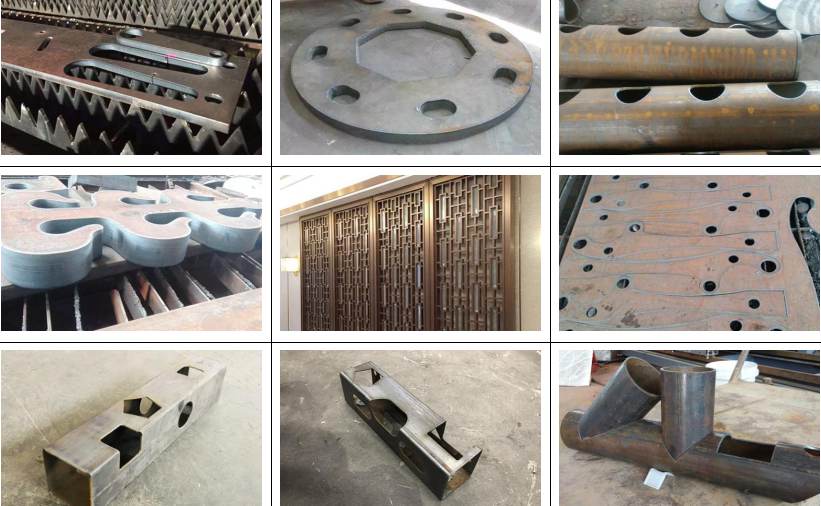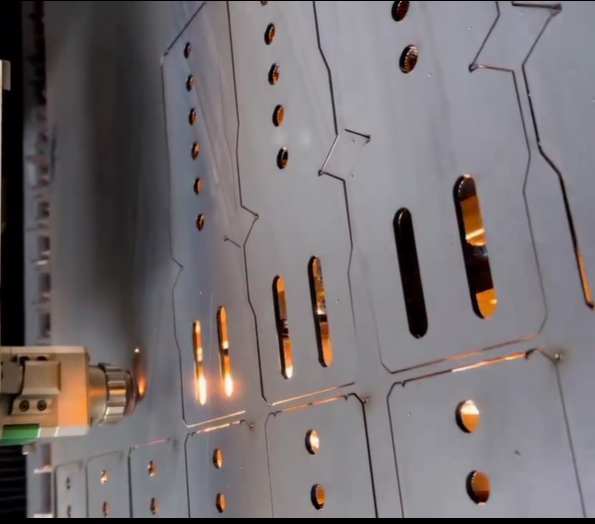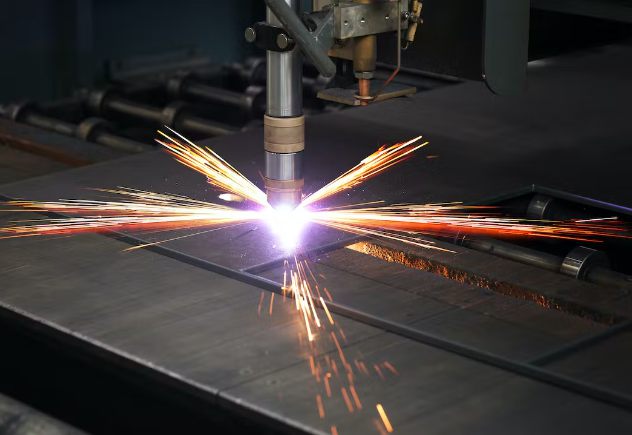Laser Knowledge
Laser Cutting Vs Traditional Metal Cutting Technology
Metal cutting is a fundamental process in various industries such as manufacturing, construction, and automotive. Traditional metal cutting technologies have been in use for decades, but laser cutting has emerged as a highly efficient and precise alternative. Understanding the differences between these two approaches is crucial for choosing the most suitable method for a given application.

let’s learn about the advantages and disadvantages of traditional processing industry technology. The traditional cutting method mainly includes CNC shearing machines, punching machines, flame-cutting, plasma cutting, and high-pressure water cutting.

Laser Cutting
Working Principle
Laser cutting uses a highly concentrated beam of light (laser) to cut through the metal. The laser beam is focused onto the metal surface, where the energy is absorbed by the metal, causing it to melt, vaporize, or be blown away by a gas jet. The laser beam is guided by computer – controlled systems to create precise cuts.
Applications
Laser cutting is used in a wide range of industries for cutting a variety of metal parts. It’s essential in the electronics industry for cutting precision components like circuit boards and metal housings. In the automotive and aerospace industries, it’s used to cut complex shapes for parts such as body panels and engine components. It’s also used in the jewelry and decorative arts industries for creating intricate designs.
Advantages
High Precision: Can achieve extremely accurate cuts with tolerances as low as a few thousandths of an inch. This precision allows for the creation of complex and intricate shapes, such as those required for fine jewelry or precision – engineered parts.
Minimal Heat – Affected Zone: The HAZ is very small compared to traditional methods like flame and plasma cutting. This reduces the risk of distortion and changes in the metal’s mechanical and chemical properties, making it ideal for cutting heat – sensitive materials.
Clean Cuts and Good Edge Quality: Produces clean, smooth cuts with little to no burrs. The edge quality is excellent, often requiring little or no post – cutting finishing, which can save time and cost in the production process.
Versatility: Can cut a wide range of metals, including both ferrous and non – ferrous metals, and can handle different thicknesses. It’s also capable of cutting different shapes, from simple lines to complex 3D geometries.
High – Speed Cutting: Can cut metal at a relatively high speed, especially for thin – to – medium – thickness materials. This can increase productivity and reduce production times.
Flame cutting
Flame cutting is the initial thermal cutting method, namely gas cutting. Traditional flame cutting has experienced acetylene gas cutting, propane cutting, and now the widely used natural gas cutting. The cost of flame cutting equipment is low, it supports the cutting of thick steel plates, and the market has a very large stock; its disadvantages are that the cutting thermal deformation is too large, the slit is too wide, and the utilization rate of the plate is low. It is only suitable for rough processing products and requires secondary processing.

Plasma cutting
Plasma cutting is a processing method that uses the heat of a high-temperature plasma arc to melt and evaporate the metal part or part of the incision of the workpiece and uses the momentum of the high-speed plasma to remove the molten metal to form an incision. The advantage is that the cutting speed is fast, the cutting surface is smooth, and it supports various metals that are difficult to cut by oxygen, especially for non-ferrous metals. The disadvantage is that the cutting seam is wider, the cutting surface is not smooth, and it is easy to produce a large amount of metal dust, glare, etc problem. Production safety cannot be effectively guaranteed.
Shearing machine
A shearing machine, also known as a steel plate shearer, is a machine that uses one blade to reciprocate linear motion relative to the other blade to cut the plate. It belongs to one kind of forging machinery and mainly applies to metal plate processing that only needs straight cutting. This kind of equipment has low cost and simple operation. The purpose relatively single, not flexible, and don’t support cutting a variety of graphics pattern.
Punching machine
The punch is a punching press, which is mainly suitable for cutting simple graphics such as square holes and round holes, which improves the flexibility in curve processing. Some specific metal sheet workpieces can be processed at one time, and the processing speed of thin plates is fast. Disadvantages: First, the ability to stamp thick metal plates is limited, and the main processing objects are carbon steel plates with a size of less than 2mm. Second, the punching
process is highly dependent on molds, and mold development circle are long, production costs are increased, and the degree of flexibility is not high. The third is that the processing surface of the thick steel plate is not smooth, and it is easy to produce collapse grooves, and the conventional forming will cause certain damage to the outer surface of the material, and processing noise is loud.
High-pressure water cutting
High-pressure water cutting, commonly known as “water jet” cutting, this method uses high-speed water jet cutting technology, has the characteristics of strong cutting power, low cost, applied to cutting a variety of materials, and adaptable to thick plate cutting. The disadvantage is that “water jet cutting” when cutting with high hardness or thick plates, the speed becomes slow, the operating environment is chaotic., and the consumables are high.
The above-mentioned traditional cutting processes are well-known and applied by manufacturers due to their price advantages and functions, but in the production process, the disadvantages of traditional cutting processes are quickly revealed. Rough metal processing and the need for a large amount of mold support have led to increased production costs and a waste of time and manpower is particularly serious. In addition, news of complex production processes, uneven product quality, and production speeds that cannot keep up with order demand is common. In order to overcome this production problem and conform to the development of the times, intelligent and efficient fiber laser cutting machines have emerged.

IGOLDEN BLOG
Thank you for visiting the iGOLDENCNC website. iGOLDENCNC is the professional supplier of CNC machinery application solution, within the business of producing and selling CNC machinery and accessories.